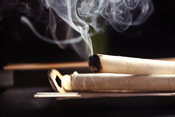Moxibustion for breech Baby

On this page
- About
- Moxibustion for breech baby
- How does moxibustion work?
- What to expect
- Instructions
- Our moxibustion therapist
1. About
A breech presentation is a pregnancy condition that occurs in the third trimester (between 30-34 weeks). It's when the baby is not facing head down. When a breech presentation occurs, the baby's head fails to turn its head down towards the opening of the pelvis, which means the baby cannot be delivered vaginally.
Around 15% of babies will be present in the breech position, but only between 3 and 4% of these babies will remain in this position until labour. In a breech presentation, the baby is presenting with either its knees, feet or buttocks pointing downwards, meaning it is attempting to birth bottom first, which can be dangerous.
To correct a breech presentation, a doctor may attempt to use the external cephalic version (ECV) procedure. Unfortunately, this procedure is both painful and extremely uncomfortable for the majority of women and it doesn't always work.
2. Moxibustion for breech baby
Instead of using an ECV to turn a breech baby, moxibustion can be used instead. Also known as moxa, it originates from the Chinese herb mugwort. During moxibustion, moxa sticks are lit and held over acupuncture points in the body, where the heat radiating from the stick stimulates the points on the body. It's not painful and is quite comfortable. It can be started from 34-36 weeks of pregnancy.
The application of heat to the acupuncture point on the little toe called Zhiyin (UB 67) causes heat to rise in the urinary bladder channel, which travels up the body and turns the baby. The process is designed to be comfortable for the expectant mother, as the heat is pleasant and isn't painful.
3. How does moxibustion work?
Our fertility expert Dr (TCM) Attilio D'Alberto will place a smokeless moxa stick over the mother's feet, around 1cm above the little toe, as this is where the most dynamic point to activate the uterus can be accessed. Our fertility expert uses a charcoal preparation of the Mugwort herb which is smokeless, making it suitable for use at home or in the clinic.
4. What to expect
Acupuncture theory suggests that moxa has a warming effect which works to promote activity and movement in the body. The treatment also makes use of the natural rising properties of heat. Using the raising and warming effect, the acupuncturist encourages the baby to move in an attempt to get the baby to rotate into the correct position. This should provide the baby with the necessary momentum to turn into the head down position, towards the opening of the pelvis.
The practice of moxibustion is intended to be the most comfortable option for an expectant mother suffering from a breech presentation. Our acupuncturist will demonstrate how to apply moxa to the little toe and will give you instructions and a box of moxa sticks for you to continue the treatment at home.
5. How to use moxibusstion to turn a breech baby
How to apply moxibustion for breech births:
- Light one end with the lighter
- Hold the lit end two to three centimeters from the outer edge of your little toe, making sure there is never any direct contact with the skin
- Apply on each little toe for approximately 20 minutes for 10 days
- When treatment has finished, place the moxa stick in a glass jar with the lid screwed on firmly
- When you feel any movement, visit your midwife and have a scan to see if the baby has moved into the correct position
- If the baby has, then reduce the treatment time to 10 minutes for each toe until the 10 days has been reached
6. Our moxibustion therapist
Dr (TCM) Attilio D'Alberto BM (Beijing), BSc (Hons) TCM, MBAcC, MATCM
 Dr (TCM) Attilio D'Alberto has been practicing acupuncture and Chinese herbal medicine for over 22 years and specialises in pregnancy acupuncture. He is author of My Pregnancy Guide and is passionate about empowering people with the ancient knowledge of Chinese medicine through lifestyle, diet and advice.
Dr (TCM) Attilio D'Alberto has been practicing acupuncture and Chinese herbal medicine for over 22 years and specialises in pregnancy acupuncture. He is author of My Pregnancy Guide and is passionate about empowering people with the ancient knowledge of Chinese medicine through lifestyle, diet and advice.
Dr (TCM) D'Alberto graduated with a Bachelor of Medicine from Beijing University of Traditional Chinese Medicine (TCM) in China. This full time, five year degree program included six months internship at two of the largest hospitals in Beijing, China.
Schedule Appointment


















